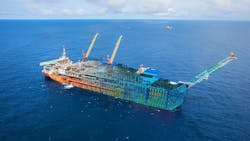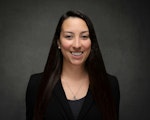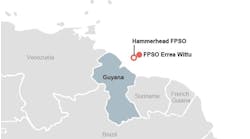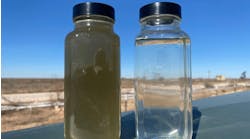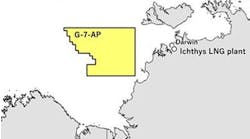Digital twin technology optimizing efficiency for offshore facilities
By Ariana Hurtado, Editor and Director of Special Reports
Digital tech company Akselos is working within the oil and gas industry to improve the monitoring process using advanced digital twin simulation software.
The Switzerland-based company says digital twin technology optimizes efficiency through detailed and accurate simulation of facilities leading to improved process efficiency, increased throughput and reduced downtime. The technology also aims to enhance safety through real-time monitoring of critical components and systems through predicting and detecting anomalies in the virtual replica.
John Bell, Akselos' senior vice president of sales, recently chatted with Offshore about how digital twin technology is optimizing efficiency for offshore facilities.
“It is becoming costlier to inspect and maintain offshore assets as they age,” he said. “Using digital twin technology to undertake remote monitoring from onshore can lead to significant savings by ranking risk on the asset and deploying inspections on an as-needed basis versus calendar or frequency deployments.”
However, there are challenges that companies face with digital twin technology and improvements that tech providers are looking into to advance this as an even more viable option for offshore operators looking to improve remote monitoring and operations.
“Most digital twin technology has emerged from legacy solutions that cannot provide the detail of simulation required to produce the necessary fidelity to undertake detailed remote monitoring,” Bell explained. “A completely new tech with ultimate scale and speed is needed for operators to be confident to go fully remote and remove in-person monitoring entirely.”
“Akselos is the only structural physics-based model that can simulate entire structures in minute detail and provide results in seconds,” Bell said. “Consider this a real-time fitness for service on demand across a whole asset. We have reduced a six- to eight-week legacy workflow into seconds or minutes, and we can model all weather and operating conditions at the speed of operations in near-real time. Typically, this results in a speedup of a thousand times compared to legacy solutions at a scale of 50 times or more.”
Case study
Offshore Nigeria, Shell was suffering from high FPSO maintenance expenses due to complex inspection and maintenance workflows that required a significant amount of engineering judgment. The supermajor sought a more quantitative, data-driven approach to provide actionable maintenance insights that could drastically optimize the way it uses its engineering and maintenance resources. The challenge was to ensure risks associated with the Bonga FPSO’s operational condition and life extension were understood and effectively controlled without incurring additional costs.
Akselos provided its Integra software to automate the framework for analyzing inspection data using a holistic, detailed digital twin model. Using the digital twin technology, the operator achieved five times ROI for the engineering workflow, enabling structural analysis as frequently as new inspection data is available.
Future tech development
Looking ahead, there are still additional digital needs in the offshore energy space that will help to further improve efficiencies, and Bell said Akselos looks to deliver on the remote ops front.
“Akselos, with its partners, are ingesting data from ultrasonic crawlers and drones as it is produced. As a result, data collection, root cause analysis, and fitness-for-service condition are now near-real-time speed,” he said. “In the future, more intelligently placed sensors and other IoT [Internet of Things] devices can further reduce the need for human intervention to minimize cost and risk.”
Moreover, Bell emphasized the necessity of embracing digitalization in this era of energy transformation.
“Digitized and automated remote asset integrity activities must accelerate as the energy transition progresses. For instance, the cost of monitoring offshore wind is unsustainable unless it is fully digitized and manual intervention becomes the exception,” he concluded. “Full-scale physics-based models with millimeter-level detail across the entire structure will be essential to capture all the conditions the asset will experience. Live viewing and structural intelligence at the speed of now will be the critical success factor.”
06.05.2023
